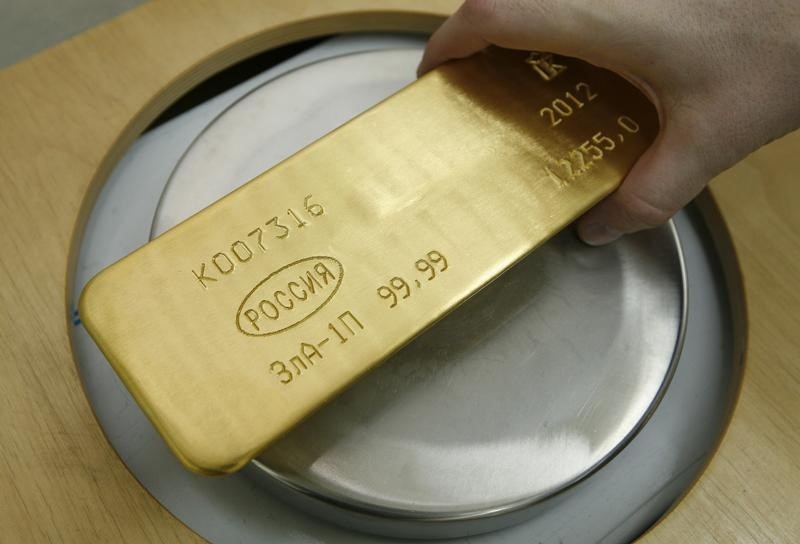Gold positioning does not look stretched despite record highs: UBS
Investing.com -- In August 2024, gold prices reached record highs, surpassing $2,500. Despite this, UBS analysts believe the gold market is not overvalued.
The analysts consider macroeconomic factors, investor positioning, and market dynamics to conclude that there is potential for further price increases.
The recent rally in gold prices has been largely driven by a favorable macroeconomic environment. UBS analysts point to several factors that have aligned to support the precious metal's ascent.
“Dovish Fed expectations – with UBS economists now forecasting three 25bp rate cuts this year – the move lower in real rates, and a weaker US dollar have all been positive for the gold price,” the analysts said.
Such monetary easing is expected to bolster gold by lowering real interest rates and weakening the U.S. dollar, both of which traditionally support higher gold prices.
In addition to monetary policy, geopolitical risks and the upcoming U.S. elections have heightened uncertainty, further enhancing gold’s appeal as a safe-haven asset. Moreover, the U.S. dollar's recent weakness, which often moves inversely to gold, has provided an additional tailwind for the metal's price rise.
While the exact catalyst for the latest surge in gold prices is not immediately clear, UBS emphasizes that the broader macroeconomic backdrop has been highly conducive to this upward movement.
Despite the increase in gold prices, UBS asserts that market positioning does not seem overextended. This perspective is supported by several indicators that paint a picture of a market that is far from overcrowded.
For instance, while net long positions on Comex have risen significantly, they remain below historical highs. This suggests that there is still considerable room for additional allocations to gold without the risk of creating an overly leveraged market.
Further supporting this view are the sustained inflows into gold exchange-traded funds (ETFs). UBS analysts highlight that these inflows reflect a continued strong interest in gold as an investment.
They expect that these trends will persist, especially as the Federal Reserve begins to cut rates, thereby reducing the cost of holding gold positions.
These factors indicate that investors are not excessively leveraged in gold, leaving the market well-positioned to absorb further investments without the risk of a significant pullback.
UBS analysts have also observed a reestablishment of historical macroeconomic relationships that have traditionally influenced gold prices. One key observation is the stabilization of gold's negative correlation with U.S. real interest rates.
This negative beta is a positive sign for gold’s continued strength, as it suggests that the metal will continue to benefit from a lower rate environment.
Additionally, gold's dual role as both a safe haven and a correlated asset with risk markets has become increasingly evident. While gold has moved in tandem with risk assets due to shifting Fed expectations, its safe-haven appeal has limited its downside during periods of market stress.
This unique positioning in the current economic landscape further supports UBS’s view that gold’s ascent is well-grounded.
On the physical demand side, UBS notes some weakness, particularly in major markets like China and India. “Combined imports to China and India in July were down 58% y/y, though the YTD volumes are still up by 5% given the strong start to the year,” the analysts said.
However, on a year-to-date basis, volumes remain slightly up, thanks to a strong start earlier in the year. UBS expects that seasonal factors, particularly in India ahead of major festivals like Dussehra and Diwali, will support a rebound in physical demand despite the higher global prices.
The official sector has continued to purchase gold, albeit at a slower pace. Countries such as India, Poland, and Uzbekistan have added to their reserves, while China has maintained its holdings for several months.
UBS believes that many emerging market central banks will continue to be net buyers of gold, as their gold holdings relative to total reserves remain low compared to their peers.
Source: Investing.com
